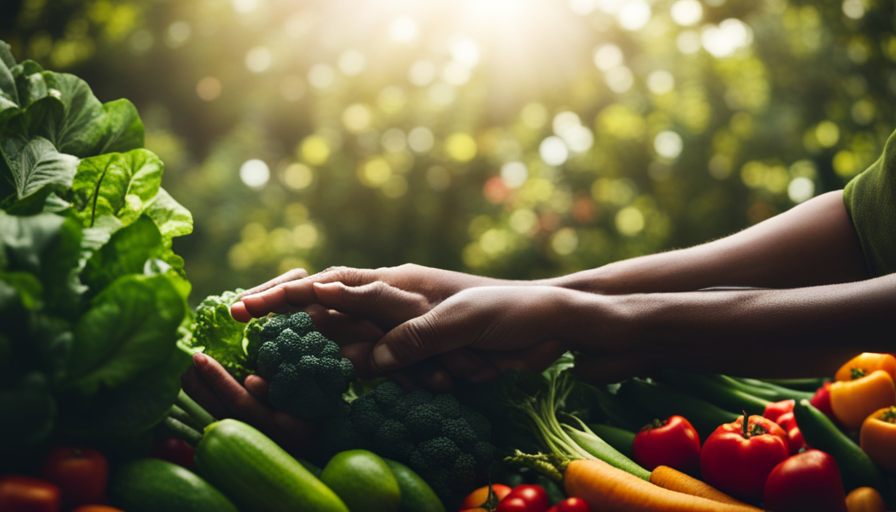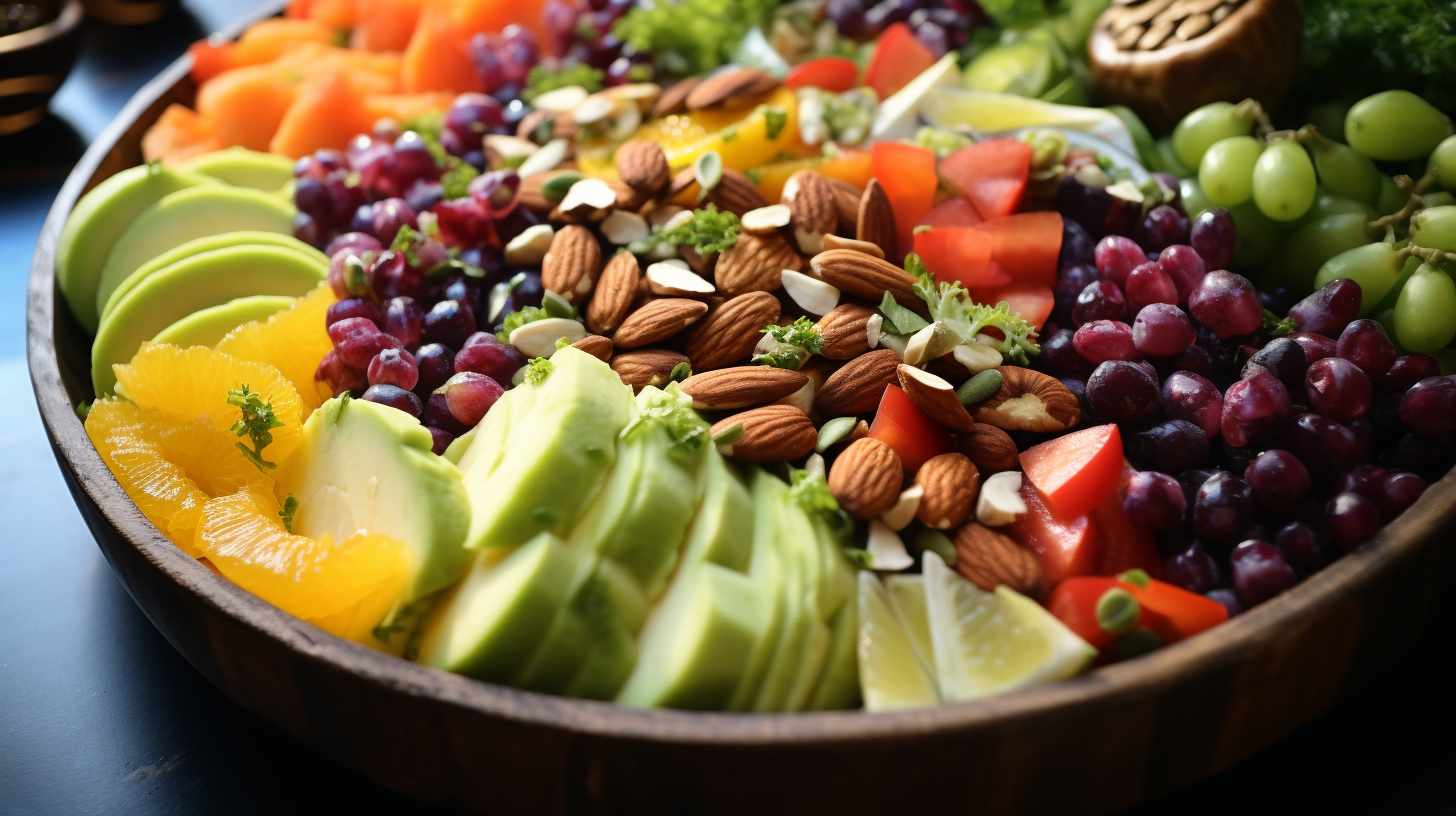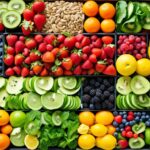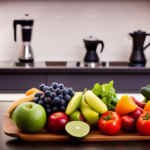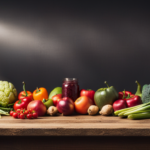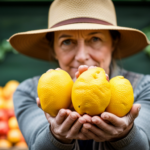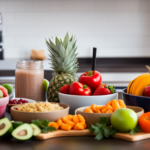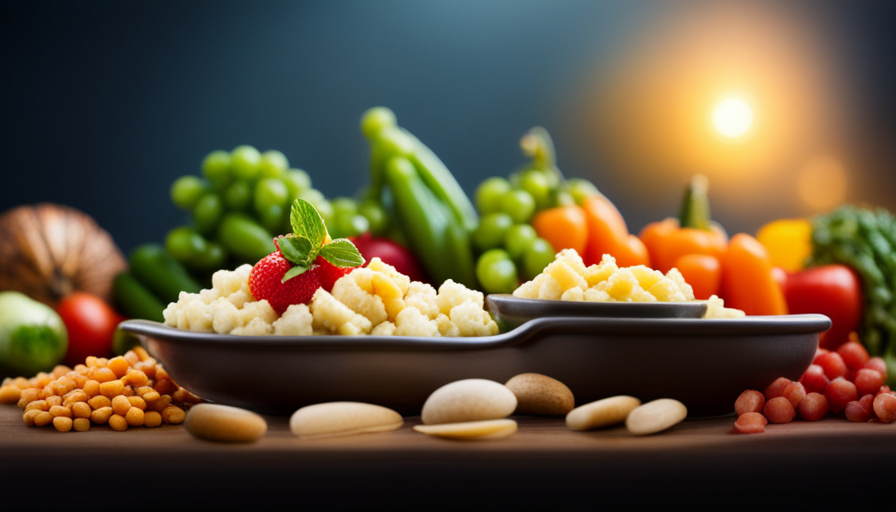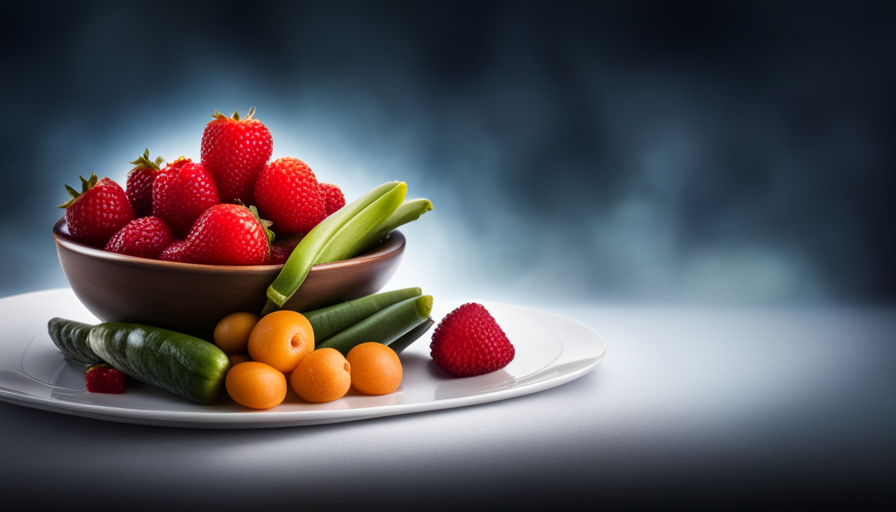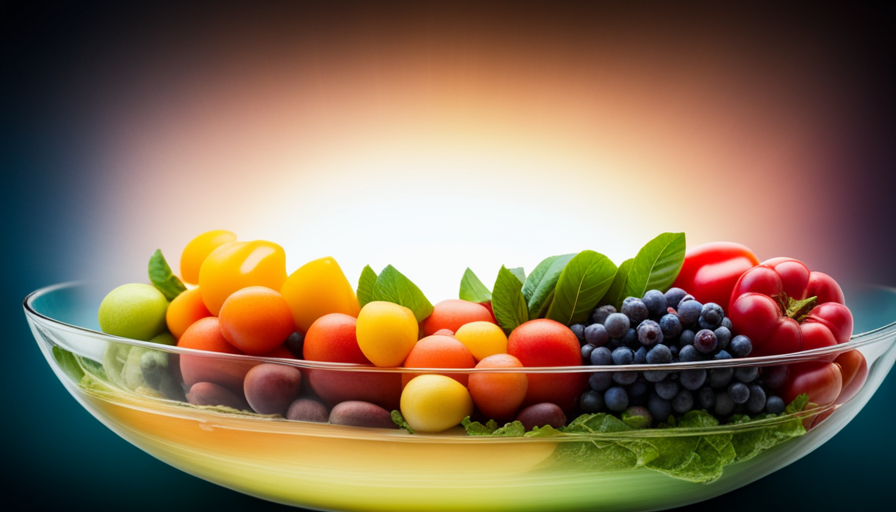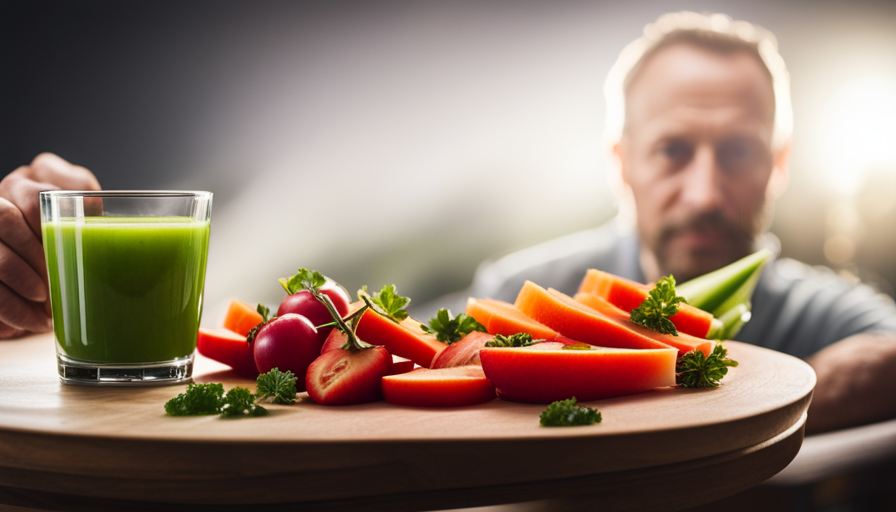Hey there! As a nutritionist and dietitian, I’m here to talk to you about the 14 day raw food cleanse. This cleanse is popular among many people because it offers a simple way to refresh your body and get back on track with healthy eating habits.
It also promotes better digestion and can help reduce inflammation in the body. So if you’re looking for ways to jumpstart a healthier lifestyle, this might be just what you need.
In this article we’ll dive deeper into the specifics of a 14-day raw food cleanse and discuss how you can make the most out of it. We’ll look at which foods are encouraged during the cleanse as well as some tips for making sure you stay motivated throughout the two weeks.
Let’s get started!
What Is A Raw Food Cleanse?
A raw food cleanse is like a breath of fresh air for your body – its effects are cleansing, revitalizing, and ultimately transforming. As a nutritionist/dietitian, I strongly recommend trying out this type of diet as it can have amazing detoxifying benefits on one’s physical and mental health.
A raw food cleanse involves abstaining from cooked or processed foods in favor of consuming only unprocessed plant-based whole foods that remain uncooked such as fruits, vegetables, nuts, seeds, sprouted grains and legumes. This way you get the maximum amount of nutrients possible while avoiding added salt, sugar or other artificial preservatives which can be detrimental to our overall health.
Not only does it provide essential vitamins and minerals to nourish the body but also supports digestion in order to restore bodily balance again. To reap all the potential rewards from a raw food cleanse, you must commit to eating mostly organic produce and preparing meals with love!
With some dedication and careful planning you’ll soon start seeing positive changes both physically and mentally. Let’s explore further into these potential benefits now…
Benefits Of A Raw Food Cleanse
Doing a raw food cleanse can be an incredibly beneficial experience for your overall well-being. Not only does it provide you with mindful eating practices, but also allows the body to reap immense stress relief benefits.
A raw food lifestyle emphasizes consuming foods that are unprocessed and not cooked above 46 degrees celsius (115F). This means that most of the enzymes found naturally in fresh produce remain intact as they are not exposed to heat.
Eating nutritious and whole foods helps support healthy digestion and elimination which can help reduce inflammation in the body. It is important to note however, that incorporating nutrient dense foods such as nuts, seeds, sprouted grains or algae into your diet will ensure adequate intake of essential vitamins and minerals during this period of cleansing.
In addition to promoting healthy digestion, a regular practice of mindful eating encourages being aware of how different foods make our bodies feel – both physically and emotionally. Eating less processed food has been shown to improve mental clarity and focus while reducing anxiety levels; two crucial elements for managing daily stressors.
To get the most out of these healthful habits, take time when preparing meals so that each ingredient’s flavor is appreciated fully without rushing through the process.
As you embark on this journey towards improved physical and emotional wellbeing, understanding what types of foods are allowed while doing a raw food cleanse is imperative…
What Foods Are Allowed?
A raw food cleanse is like a bridge between the land of processed and unhealthy foods to one where nutrient-dense and anti-inflammatory foods reign. Like any journey, it takes discipline, commitment, and planning for success.
As far as what you can eat on this cleanse, think fresh fruits, vegetables, nuts and seeds in their whole form–no cooking required!
Eating out while following a raw food diet is possible too; just look for restaurants that serve salads or dishes with organic ingredients.
Grocery costs may be higher than usual since organic produce can be more expensive; however, many people have found that they save money overall by avoiding processed snacks and meals that quickly add up.
When deciding what to eat during your cleanse remember to keep things simple: if it came from nature then it’s fair game!
To ensure optimal results stay away from anything cooked above 115°F (46°C), processed vegan meats/cheeses/mayo, alcohol, caffeine etc.
Allowing yourself some flexibility within these parameters will help make sure you stick with your plan long enough to see real results.
What Foods Are Not Allowed?
When it comes to a raw food cleanse, there are some foods that you should avoid. Eating out is not recommended as restaurant meals often contain processed ingredients and sauces that can be difficult to identify in terms of their nutritional content.
It’s also important to pay attention to portion control when eating raw foods – especially if your goal is weight loss. While it’s possible for an individual to consume too many calories from unprocessed fruits and vegetables, this approach makes it more likely that individuals will stay within their calorie range without feeling overly full or unsatisfied.
It’s best to focus on fresh produce, nuts, seeds, legumes, grains and plant-based proteins such as tempeh during the cleanse. Dairy products like milk and cheese should be avoided due to their high fat content – even if they come from organic sources.
Additionally, all forms of sugar should be eliminated while cleansing including honey, agave nectar and artificial sweeteners like Splenda® or Equal®.
Now that we know what types of foods should be excluded from our diet during a raw food cleanse, let’s look at how we can plan delicious meals that fit into our dietary guidelines.
Planning Your Meals
Now that you know what foods to avoid during your raw food cleanse, it’s time to start planning your meals.
Being mindful of what you eat and creating a meal plan is the key to success for any diet or lifestyle change.
Meal prepping can be an especially useful tool when beginning a new routine.
Taking some extra time on the weekend to cook and organize your meals will help make sure you’re eating healthy throughout the week.
It’s important to remember that having a balanced diet is essential for optimal health.
Focus on whole grains, fruits, vegetables, nuts, seeds and legumes – all of which are allowed in a raw food cleanse!
You should also pay attention to portion size; eating too much at one sitting can lead to discomfort or even sickness.
Eating slowly helps with digestion and allows us to savor our food and appreciate its flavor.
By making conscious decisions about what we consume during this cleanse, we can nourish our bodies while still maintaining balance in our lives.
If done correctly, meal prep can save time but more importantly promote healthier habits overall.
Now let’s move onto stocking your kitchen with nutritious ingredients so that you have everything you need for your raw food journey!
Stocking Your Kitchen
When embarking on a raw food cleanse, it’s important to have the right tools and ingredients in your kitchen. I suggest stocking up on whatever you need before starting your journey. This means planning ahead with stocking strategies and organization of your kitchen shelves and refrigerator.
In terms of stocking strategies, focus on buying lots of fresh fruits, vegetables, nuts, seeds, herbs and spices. Stock up on healthy oils such as coconut oil or avocado oil for sautéing or baking. Be sure to also add some superfoods like goji berries or spirulina powder for an extra nutrient boost! Additionally, if you want to make smoothies or cold drinks you’ll want to purchase a good quality blender too.
Organization is key here; try grouping similar items together so that they are easier to find when you’re cooking. For example – keep all your nuts in one place and all of your spices in another area – this will save time when trying to locate what you need during meal preparation!
As well as making life easier for yourself by having everything organized beforehand, it can be really helpful for those just starting out because it gives them visual inspiration when putting meals together. Now that we’ve discussed stocking strategies and kitchen organization techniques let’s move onto the next topic: grocery shopping tips!
Grocery Shopping Tips
When it comes to grocery shopping for a raw food cleanse, budgeting is key. Making a list and sticking to it will help you avoid impulse purchases. Looking at nutrition labels can also be helpful to make sure you’re getting the most nutrient-dense food for your money.
I recommend shopping the perimeter of the grocery store where you’ll find the freshest produce and other raw ingredients. Preparing a grocery list ahead of time will help you save time and money during your shopping trip. Planning your meals for the week can also help you buy only what you need, and nothing more.
Finally, I suggest shopping for organic whenever possible, as this will ensure you’re getting the most nutrient-dense foods.
Budgeting
Are you looking for ways to save money on your grocery shopping? It’s a smart move, and I’m here to help!
When budgeting for groceries, there are some key tips that can make all the difference. To begin with, make a list before heading out – it’ll help keep impulse buys in check.
Secondly, take advantage of store sales and coupons; this is an easy way to get items at discounted prices.
Lastly, bulk purchases can be great if buying non-perishable foods; this will cut down costs over time and reduce waste too!
All these budgeting tips should make saving money while grocery shopping a snap.
Nutrition Labels
Making sure you’re getting the right portion sizes and food groups is key to grocery shopping, so it’s important to read nutrition labels!
For one thing, look at serving size; this will help calculate how much of a certain product should be consumed in one sitting. Also, check out the macronutrient breakdown – that’s where you can see how many grams of carbs, fat, protein are listed per serving.
Additionally, take note of the percentage of daily values for each nutrient; these percentages tell us what proportion of our recommended dietary intake is found in one serving. With all that info on hand, there’ll be no doubt about which foods best fit your nutritional needs.
It also pays off to double-check ingredients lists; some products may contain added sugars or unhealthy fats that aren’t always apparent from looking at the label itself. So make sure to keep an eye out for any potential red flags when scanning those ingredient lists!
Being aware of nutrition labels helps ensure you have the most nutritious goods within reach – and ultimately save money too!
Shopping List Preparation
Once you’ve got your nutrition labels under control, it’s time to move on to the next step: Shopping List Preparation.
This is where planning ahead and prioritizing what food items you need can be a real life-saver! Before heading out to the store, I recommend siting down and mapping out which ingredients you want for any upcoming meals – this will help save time at checkout and prevent impulse purchases of unnecessary snacks that don’t fit into your budget or portion sizes.
Meal-prepping can also come in handy here; having pre-made dishes ready in advance means less stress later when it comes to mealtime decision making. Making sure you know exactly what groceries are needed helps avoid overspending as well – so make sure to take some extra time with shopping list preparation and plan accordingly!
Tips For Staying Motivated
Now that you have all the necessary ingredients for your raw food cleanse, it’s time to think about staying motivated throughout the process. The key is to stay focused on why you started this journey in the first place and what long-term benefits you hope to gain from it. Here are a few tips to help keep you inspired:
- Reframe mystery foods as an opportunity to explore new flavors and textures: Rather than getting overwhelmed by unfamiliar produce, look at them as culinary mysteries waiting to be discovered!
By being mindful of how each ingredient tastes and feels when consumed, both alone and combined with other dishes, you’re sure to enjoy a wide variety of flavors during your cleanse.
- Have fun with meal planning: Meal prepping doesn’t have to be boring or tedious – use it as an opportunity to get creative! Investigate different recipes online or come up with your own combinations using fresh fruits, vegetables and herbs.
Play around with spices too – they can make all the difference in elevating any dish!
- Set achievable goals: Establishing measurable goals helps maintain focus and momentum along your raw food journey. Make sure these objectives align with your overall health plan so that progress towards achieving them will bring satisfaction rather than disappointment.
Celebrate small wins like creating three raw meals per week or trying one new recipe each day – even if some experiments don’t turn out as expected, having fun while learning something new is its own reward!
From here we move onto exploring delicious recipes for breakfast…
Recipes For Breakfast
Breakfast is the most important meal of the day and should never be skipped. On a raw food cleanse, it’s especially important to start your day off right with healthy ingredients that will energize you throughout the morning. It’s also essential to practice mindful eating and portion control while on this journey.
Fruits are an ideal way to kickstart your metabolism each morning; they’re packed with minerals, vitamins, fiber, and natural sugars which provide long-lasting energy without spiking up your blood sugar levels. A few great options are bananas, apples, oranges, pears, berries or mangoes blended into smoothies or eaten as is. You can also combine some nuts for added protein and texture.
Vegetables make excellent additions to breakfast meals too! Start by adding greens like spinach or kale to your favorite smoothie recipe for extra nutrition then move on to heartier vegetables such as tomatoes or cooked mushrooms if you prefer hot dishes in the mornings. Remember to keep portions reasonable so not to overwhelm your system; a handful of veggies per meal should suffice!
Now that we have discussed recipes for breakfast let us explore recipes for lunch…
Recipes For Lunch
Eating lunch can be tricky during a raw food cleanse, especially if you’re eating out. To make sure your meals are still within the confines of your diet, portion control is key.
When ordering from restaurants or cafes, try to get creative with side dishes that fit into your plan- think salads and cut up veggies! Even when there aren’t many options on the menu, it’s possible to find something healthful by combining small portions of different items available.
Another option for lunch is bringing in pre-prepped foods from home such as veggie wraps or smoothies made with nut milks and fresh fruits. This way you don’t have to worry about what ingredients were used in the preparation process and know exactly what went into making them.
And since these meals can usually last a couple days, you won’t need to spend time preparing food each day which will save you valuable energy while cleansing.
When choosing snacks throughout the day, reach for naturally sweet fruits like watermelon or pineapple rather than processed snacks full of added sugars. Eating every few hours is essential for maintaining balanced blood sugar levels and keeping hunger at bay so having healthy alternatives readily available helps ensure success!
Moving onto dinner recipes…
Recipes For Dinner
The dinner hour often comes with a sense of anticipation. A chance to rest, refuel, and reconnect; it’s the heart of the day. But when you’re on a raw food cleanse, eating out can be challenging and portion control is key.
As a nutritionist/dietitian I recommend starting your evening meal with a variety of colors:
- Red- bell peppers, tomatoes, strawberries
- Orange – sweet potatoes, carrots, cantaloupe
- Green – kale, spinach, broccoli
- Purple – blackberries and eggplant
An array of colors not only looks appealing but also ensures that you’ll get all the essential vitamins and minerals for optimal health benefits.
To make sure your dinner matches your dietary needs for a raw food cleanse try to keep things simple by steaming vegetables or making salads with fresh herbs from the garden. If you are feeling ambitious maybe create some homemade crackers or rolls made from soaked nuts and seeds blended together in the food processor. Whatever route you choose to go do remember to focus on quality over quantity so that as night falls you feel nourished yet light at the same time!
Transitioning into snacks ideas–
Snack Ideas
After you make it through dinner, it’s time to think about your snack options. While the idea of a raw food cleanse may have you feeling deprived, there are actually plenty of delicious snacks that can fit into this diet. Plus, they don’t take much prep time!
If you feel like having something sweet, try blending frozen banana and some coconut milk for a creamy treat.
If you prefer savory snacks, go for baby carrots and hummus or celery with tahini dip.
You can also get creative by making homemade kale chips or dehydrating apples slices for an easy crunchy snack.
These ideas provide a few simple and tasty ways to enjoy snacking while keeping up with your raw food cleanse. With just a bit of planning ahead, these quick treats will help keep you satisfied until your next meal.
Now let’s look at supplement suggestions for your raw food journey…
Supplement Suggestions
I understand that embarking on a raw food cleanse can be challenging, especially if you’re not familiar with the nutritional benefits of consuming only uncooked and unprocessed foods. That’s why I want to emphasize the importance of supplementing your diet in order to ensure your body gets enough nutrient sources for optimal health.
Taking digestive aid supplements like probiotics or enzymes are also beneficial during this time as they help support gut health.
When selecting dietary supplements, look for products that contain natural ingredients such as fresh herbs, fruits, vegetables and other plant-based sources rather than artificial additives or preservatives. Additionally, make sure to research any new product before taking it by reading labels carefully and speaking to trusted healthcare practitioners when needed.
Staying hydrated is an essential part of any healthy eating plan but even more so when doing a raw food cleanse. To keep up with your water intake throughout the day, here are some helpful tips…
Tips For Staying Hydrated
Staying hydrated during a raw food cleanse is essential for your body to function properly. Not only will it help flush out toxins, but drinking enough water can also keep you energized and focused throughout the day.
Here are some tips on how to maintain proper hydration:
-
Drink plenty of fluids: Aim for at least 8-10 glasses of water each day, as well as other non-caffeinated beverages like herbal teas or coconut water.
-
Avoid caffeine and alcohol: Caffeine and alcohol act as diuretics that cause dehydration and may make you feel more sluggish than usual. Try replacing coffee with green tea instead for a nice boost of energy!
-
Eat fruits & veggies: Eating foods high in water content such as cucumbers, celery, tomatoes, apples, strawberries and oranges can provide natural electrolytes while boosting your nutrient intake.
By following these simple steps you’ll be able to stay hydrated throughout the cleanse without having to worry about feeling tired or sluggish. Staying hydrated can even improve mental clarity which will help keep you focused on reaching your health goals.
Now onto maintaining healthy habits after the cleanse…
After The Cleanse: How To Keep Healthy Habits
Once you’ve completed your raw food cleanse, it’s important to maintain healthy habits and keep up the progress you’ve made. Staying balanced is key—you don’t want to jump back into unhealthy eating patterns right away after all that hard work!
Eating a variety of foods in moderation will help ensure you get enough nutrients while avoiding boredom with your meals. When transitioning from your cleanse, consider incorporating some cooked dishes as well as raw items for more flavor options. Also continue to monitor portion sizes so you don’t overindulge; grazing throughout the day can be helpful if needed.
Adding different herbs and spices to your recipes can also add extra nutrition and make meals more interesting. Lastly, focus on making sustainable changes like exercising regularly, drinking plenty of water, getting enough sleep, and reducing stress levels. These practices are beneficial for physical health but also mental wellbeing which should not be overlooked either!
Aim for gradual lifestyle adjustments rather than quick fixes or drastic overhauls so that these positive lifestyle choices become part of your daily routine and bring lasting results.
Frequently Asked Questions
How Much Weight Can I Expect To Lose On A 14 Day Raw Food Cleanse?
When it comes to meal planning and eating habits, a 14 day raw food cleanse can be an effective way to lose weight. How much you’ll shed depends on several factors including your starting weight, activity levels, and how strictly you stick to the plan.
Generally speaking though, most people can expect to drop 1-2 pounds per week while doing a short-term cleansing program like this one. So if everything goes smoothly, you could lose up to 4 or 5 pounds in two weeks!
Are There Any Health Risks Associated With A Raw Food Cleanse?
Who would have thought that following a raw food lifestyle could come with risks?
Sure, it can offer some amazing mental benefits and be an incredible lifestyle change but there are also some potential health risks associated with going on a raw food cleanse.
From digestive issues to nutrient deficiencies, these cleanses may not always be the best choice for everyone.
Before attempting any major dietary overhauls, you should consult your doctor or nutritionist in order to assess if this type of diet is right for you.
What Type Of Exercise Should I Do While On The Cleanse?
If you’re looking to get the most out of your raw food cleanse, it’s important to pair exercise with this lifestyle.
Not only will it help keep your energy levels up and maximize results, but there are also many meditation benefits associated with regular physical activity.
Consider light activities like yoga or walking as these can be beneficial without putting too much strain on the body while following a restricted diet.
Don’t forget to include plenty of raw recipes in your meal plan and stay hydrated throughout the day!
How Long Should I Wait Between Meals?
When it comes to meal timing, it’s important to keep an eating schedule that works for you.
Generally speaking, allow 3-4 hours between meals so your body has time to digest and process the food properly.
If you’re feeling hungry in between meals, try snacking on raw fruits or vegetables like carrots or apple slices.
It’s also good practice to listen to your body – if you feel hungry before 4 hours have passed since your last meal, eat something!
Is A 14 Day Raw Food Cleanse Suitable For Long-Term Use?
Eating a raw food diet can be beneficial for some people, but it’s important to factor in mindful eating and nutritional balance when considering long-term use.
While a 14 day raw food cleanse may provide short-term results, if you’re looking to make this a lifestyle choice it’s best to slowly incorporate more nutritious options into your meals over time.
This way, you’ll ensure that all of your dietary needs are being met while still enjoying the same benefits as with a short-term cleanse.
What Should I Expect When Transitioning to a Raw Food Cleanse?
When transitioning to raw food, expect a period of adjustment as your body detoxifies and acclimates to the new diet. You may experience increased energy, clearer skin, and weight loss. However, some people also go through initial discomfort as the body eliminates toxins. Overall, expect a positive transformation in your health.
Conclusion
A 14 day raw food cleanse can be a great way to jumpstart your health journey. As it is not suitable for long-term use, it should only be done periodically and with careful consideration of the potential risks associated with such a drastic change in diet.
When considering any dietary changes, please consult a registered nutritionist or dietitian to make sure you are getting all the nutrients your body needs while still achieving desired weight loss goals.
Just like an orchestra working together to create beautiful music, our bodies need balance and harmony from the foods that we eat in order to keep us healthy!

